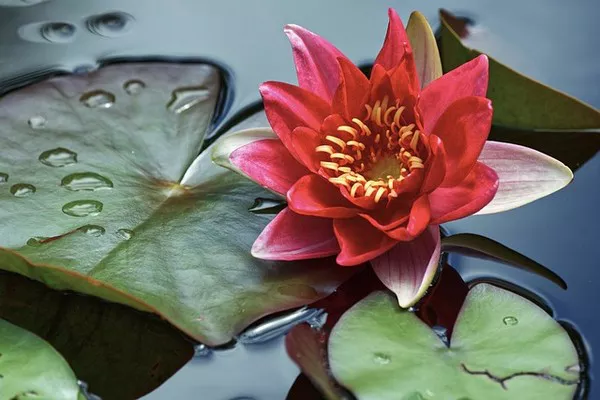The art of cake decoration has evolved over the years, transcending from traditional frosting and fondant to more innovative and natural embellishments. Edible flowers have gained popularity as an exquisite and captivating addition to cakes, offering not only aesthetic appeal but also introducing delicate flavors and aromas. This article delves into the world of edible flowers for cake decoration, exploring the types of flowers that are safe to consume, their culinary uses, and the creative potential they offer to both amateur bakers and professional pastry chefs.
Cultivating a Beautiful Culinary Palette
Edible flowers encompass a wide array of botanical species, each presenting unique colors, shapes, and flavors. The first step in incorporating these floral wonders into cake design is understanding which flowers are safe for consumption. A general rule of thumb is to only use flowers that have been grown specifically for culinary use, ensuring they have not been exposed to pesticides or other harmful chemicals.
Safe-to-Consume Edible Flowers
Roses: These timeless blooms are not only visually appealing but also offer a subtle floral flavor with hints of fruit. Remove the bitter white base and use the petals to adorn cakes or infuse them into syrups for a delicate rose essence.
Lavender: With its fragrant and calming aroma, lavender adds a unique touch to cakes. Sprinkle lavender flowers sparingly on frosting or use them to infuse cream for a lavender-flavored filling.
Violets: Delicate and vibrant, violets come in various colors and offer a mildly sweet flavor. They are perfect for decorating cakes, imparting a touch of elegance and a hint of floral taste.
Calendula: Often referred to as marigold, calendula petals provide a subtle saffron-like color to dishes along with a slightly tangy flavor. These petals can be used to brighten up cakes and desserts.
Nasturtium: Both the leaves and the vibrant blossoms of nasturtium are edible. Their peppery flavor adds a unique kick to cakes, complementing sweet flavors with a hint of spice.
Chrysanthemums: These intricate blooms have a mildly bitter taste and can be used to create visually stunning cake decorations. However, it’s important to note that only specific varieties are suitable for consumption.
Pansies: Pansies are known for their vibrant colors and delicate appearance. They have a mild, slightly grassy flavor that makes them an excellent choice for adorning cakes and pastries.
Borage: The electric blue flowers of borage are not only visually striking but also boast a mild cucumber-like flavor. These flowers are a unique addition to both decorations and beverages.
Culinary Uses of Edible Flowers in Cake Decoration
Petal Garnishes: The simplest way to use edible flowers on cakes is as decorative petal garnishes. Gently place whole or individual petals on frosting, creating visually stunning designs.
Candied Flowers: Candying edible flowers involves coating them in a thin layer of sugar, resulting in an elegant and sweet addition to cake decorations. Roses, violets, and pansies are particularly suited for this technique.
Infused Creams and Syrups: Incorporate edible flowers into creams or syrups that are used to fill or glaze cakes. The delicate flavors of lavender, rose, or elderflower can infuse a subtle floral essence throughout the dessert.
Floral Pressed Patterns: Pressing edible flowers between parchment paper or in books allows you to create delicate, translucent patterns that can be applied to cakes for a touch of elegance.
Frozen Flower Embellishments: Freeze small, edible flowers in ice cubes and use them to adorn cakes or serve alongside beverages for a refreshing and beautiful touch.
Homemade Flower Extracts: Extract the essence of edible flowers by steeping them in alcohol or glycerin. These extracts can be used to flavor frostings, fillings, and glazes.
Unlocking Creativity with Edible Flowers
The use of edible flowers in cake decoration not only enhances the visual appeal of confections but also allows for boundless creativity. Bakers can experiment with color combinations, textures, and arrangements to craft cakes that are truly works of art. Whether creating a romantic wedding cake adorned with delicate rose petals or a vibrant birthday cake accented with cheerful pansies, the possibilities are endless.
Cultural and Seasonal Significance
Different cultures have embraced the use of edible flowers in their culinary traditions. In Mediterranean cuisine, for instance, flowers like lavender and rosemary have been used for centuries to infuse dishes with unique flavors. Furthermore, utilizing seasonal flowers in cake decoration can add a touch of authenticity and freshness to the creation. Spring may call for pastel-colored pansies and daisies, while autumn may inspire the use of marigold petals or chrysanthemums.
Conclusion
The trend of incorporating edible flowers into cake decoration brings together aesthetics, gastronomy, and innovation. By thoughtfully selecting safe-to-consume flowers and experimenting with various techniques, bakers and pastry chefs can elevate their creations to new heights. Whether adding a subtle floral essence or making a bold visual statement, edible flowers provide a plethora of possibilities for expressing creativity and delighting the senses. As this culinary trend continues to evolve, the enchanting world of edible flowers opens doors to a captivating realm of cake decoration that appeals not only to the eyes but also to the palate.


